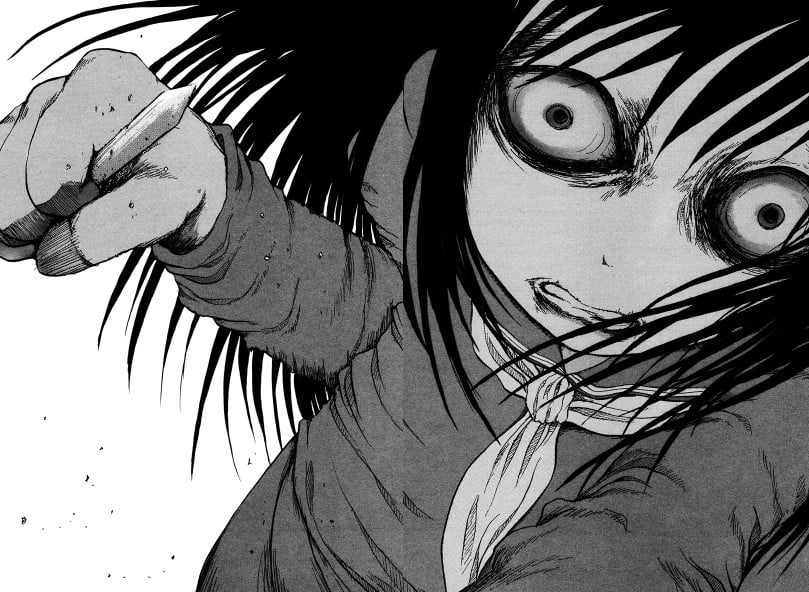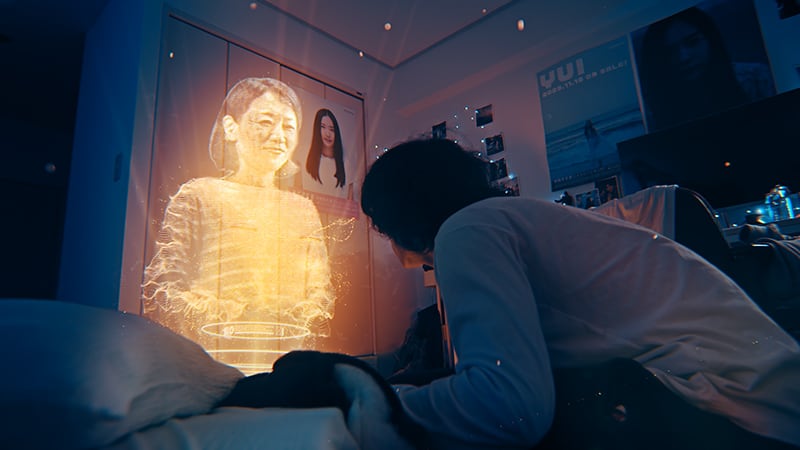After her family moves out to the small town of Oosuuma, student Nozaki Haruka finds herself the subject of extreme bullying. The small class of ten, lead by a teacher who is subservient to the popular students, begins to let their malicious acts get out of hand. With only half a year left until graduation, Nozaki decides to stick it out, but when her family ends up being murdered by the students at the school, she begins to plot revenge.
“Hepatica” is a title that has been billed by some as the ‘saddest' and ‘most disturbing' manga made, a bold claim no doubt but one with some substance to back the claim, or at least garner discussion on the validity of the response. Undoubtedly, the manga deals with an uncomfortable subject matter, heightened by an art style that can fluctuate between beauty and horror, but where the claims of its disturbing nature seem most valid is derived from the narrative.
The series deals with the death of family and subsequent revenge, a normally somewhat formulaic approach in horror and exploitation genre narratives. However, the degree of abuse carried out by children and an absent teacher on Nozaki is rather unparalleled in other manga, which extends to the degree of violence that follows. What also adds to the tragedy of the situation is the framing in which the bullying started, as Nozaki was not rejected by the group until she tried making friends with a male student. Ultimately, the amount of disgust and malice created by this event is hard to face, even in looking at extreme cases of bullying, and difficult to digest knowing the subjects are all minors.
However, to say the series will only get by on its shocking content, and those that actively seek out such experiences, would be missing the mark. The story's protagonist Nozaki, along with three notable antagonists, have their painful pasts explored in a way that makes their broken minds feel plausible, tragic and over the top, but not beyond reason. Consequently, the reader is given the impression that such a tale of violence could be reflective of real human interactions, particularly when put in the backdrop of an isolated town unwilling to discuss any of its fallacies for the sake of reputation.

Adding to the disturbing content is the visual approach of Rensuke Oshikiri, who is best known for the adorable comedy series “Hi-Score Girl”. Oshikiri's style is one of a deceptive simplicity, noted by panel work that has little detail in character profiles and often void of shading. However, the manga can transition into something wholly unsettling and perturbing within this style. This is primarily echoed in both scenes of violent attacks and warped expressions from subjects when facing mental distress. Ultimately, it is hard to quantify how strong these transitions are visually, but the switch from a clean style to images that look madly drawn certainly creates an unnerving aesthetic throughout.
It is difficult to buy into some of the infamy the series has garnered, although it is certainly understandable why so many readers have experienced a visceral reaction to the work. It is a deeply disturbing tale, backed by a deep sense of tragedy that it is hard not to feel the crushing weight of the content on the conscience. Consequently, fans of horror and tragedy would do well to give the series a shot, particularly with many nuances left out in this review to avoid spoilers.
“Misumisou” aka “Hepatica Nobilis” was adapted to a feature length film by Eisuke Naito and re-titled as “Liverleaf”. You can read our review of the film here.















